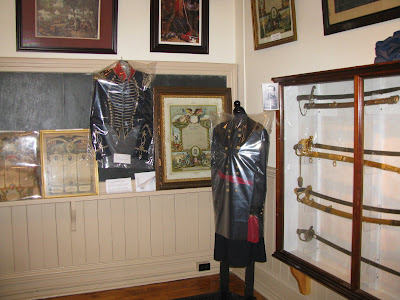
A SCHUYLKILL CANAL BOAT
Here is the story of a Canal Boat Captain from Schuylkill Haven who tragically died while working on the canal. I have come across a lot of good Schuylkill Canal info recently and plan to do a few stories on the all but forgotten men who worked on the canal.

THE HAZARDS OF CANNALING
THE DEATH OF CAPTAIN HENRY WITMAN
November 20, 1868
Pottsville Miners Journal
About 7 o’clock last Wednesday evening, Henry Witman a boatman from Schuylkill Haven, fell from his boat, the “Gabriella” while passing down the Canal opposite Pottstown. It appears that on leaving home he was unable to procure sufficient hands, and at the time the accident occurred was alone on the boat, excepting two children, a boy of 13 years and a girl of 11. He had complained of feeling unwell during the afternoon, and had intended stopping for the night just below where he fell overboard. It is believed that he must have fallen off the boat during a sudden attack of cramp or other illness, as he is a good swimmer, and could easily have gotten out of the water had nothing been the matter. The first intimation that anything was wrong was the boat striking a scow, when it was ascertained that no person was steering, and some men from the scow went aboard the boat and found nobody but the two children, who were asleep in the cabin. Search was made for the body that night, and on Thursday and Friday and Saturday without success, but on Sunday morning it was found near Stover’s pond. No marks or injuries of any kind could be found on the person of the deceased. An inquest was held by A.L. Whitman and a verdict of accidental drowning was rendered by the jury. Witman was about 39 years of age, and leaves a wife and six small children.

To a correspondent at Schuylkill Haven we are indebted for the following additional particulars in reference to this unfortunate case:
The body of Henry Witman who was drowned in Pottstown level on the 11th, was found on Saturday at 10 ½ A.M.
Wednesday the 11th was very cold and windy day. It appears that Mr. Witman had entered the cabin of his boat to clad himself preparatory to steering for the night. Being heavily clad with the flaps of his fur cap extending over his ears, heavy under clothing, an army overcoat, the cape of which being up over his head, the better to protect him from the wind and severe cold, and pair of heavy boots, the unfortunate man took charge of the helm intending to run all night. He had told his son and daughter to retire for the night little expecting that he would so soon fall to rise no more. It is assumed that while his boat was moving around the short curve where his body was found, he attempted to shift the boat suddenly, and while in the act slipped on the icy stern and fell overboard. Being heavily clothed he could make no headway, although his appearance when found plainly indicated that he made desperate attempt to save himself, his arms being extended in the swimming posture. But his cape over head no doubt prevented him from seeing his course and unfortunately he made headway in the wrong direction towards the bern side. In his struggle for life he had no assistance, and it was not until the boat ran against the bank that his absence was first discovered.

Search was at once made for the body but it was not found until the company emptied the level. The deceased was an estimable citizen, and his loss is mourned by the whole community in which he resided. He leaves a wife and six children. He was buried Tuesday afternoon, the 17th, his remains being followed to the grave by Lexington Degree Council No, 16 O.U.A.M. Metamora council, No. 66 OUAM of which he was a member.













